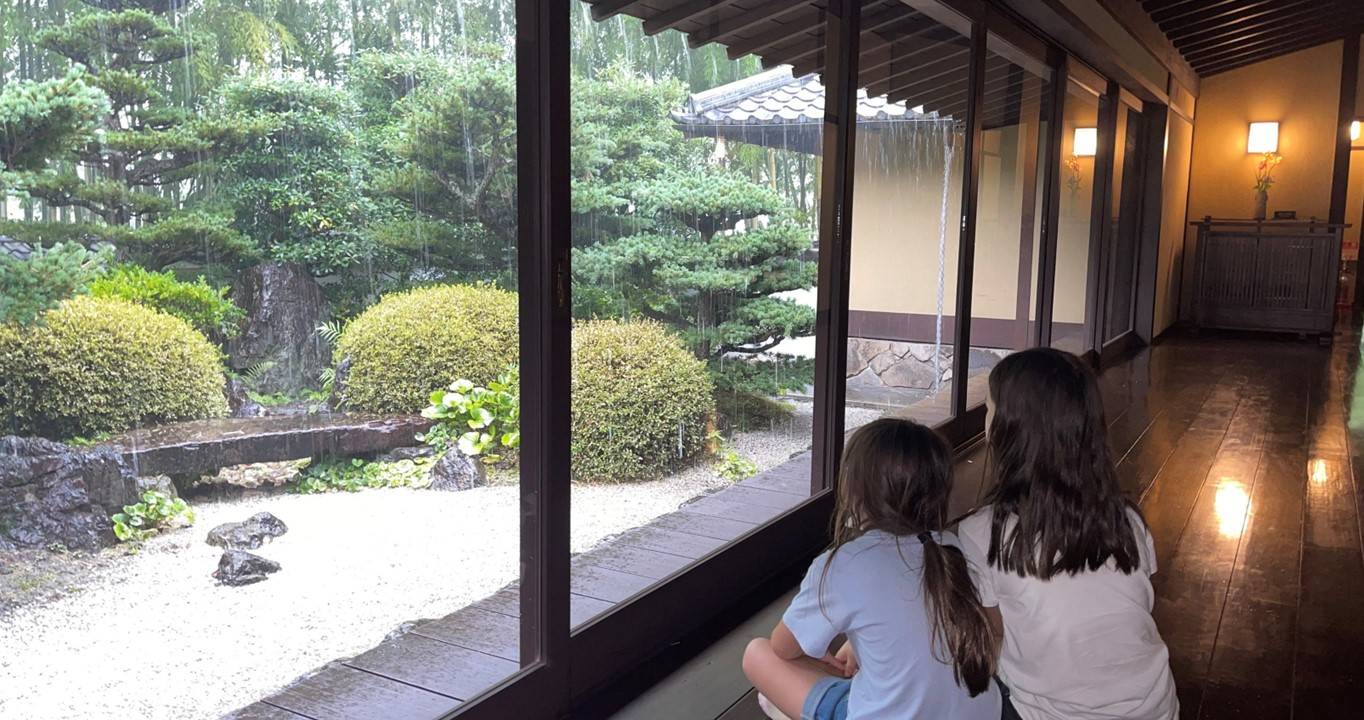
Raising bilingual children: A celebration of linguistic and cultural immersion
Feature 6 Dec 2022 5 minute readFusae Nojima, the Project Director of the Assessment of Languages Competence (ALC), is currently undertaking a PhD in Applied Linguistics at the Australian National University. In this article, Ms Nojima reflects on her recent trip to Japan with her family and how it supported the development of her children's language skills and understanding.
While it is true that learning a language is important and that its benefits are recognised widely in and beyond education, I have my personal agenda in raising my children as bilingual and bicultural. For me, it is extremely important for our children to learn their heritage language, Japanese.
As part of our endeavour to educate our children in Japanese, we ‘go back’ to Japan once a year. Although our annual tradition was not possible during the global pandemic, in 2022 we managed to finally go to Japan and see our family after a three-year break.
During our time in Japan, our children were able to go to a local school which in fact was my old primary school. It was a special moment when I set my foot back in my old school with them and farewelled them as they walked away into their classrooms.
Around the school, they learned a lot, including all the social rules that they needed to know, including cleaning their classroom by themselves, the dynamics of the classroom with the teacher and their peers, and walking to and from the school in a group with neighbourhood children.
Once, our younger daughter got into trouble as she played ‘chasey’ with her friend during the cleaning time. Her teacher wasn’t aware that our daughter did not know running in the building wasn’t allowed — this was something we later found out through discussions. Lesson learnt!
At home (my parent’s house), our daughters were constantly exposed to Japanese customs through living with their family. It is amusing to see them, especially our elder daughter who was able to remember her previous visits to Japan, ‘slip back’ into the Japanese way of living. They dressed differently and talked about different things to socialise better with their families and friends.
They realised that even to explain a small thing from an Australian cultural context, they often needed to think about the best way to explain the cultural phenomenon to those who didn’t have the relevant cultural reference. For example, when they wanted to talk about stories from their schooling in Australia, they sometimes needed to explain to their grandparents about how their school was structured, as this is different to how schools are structured in Japan.
The most exciting aspect for me to see was their linguistic development. Before the trip, our younger daughter, who was 7, passively knew many Japanese words, could read simple stories, and write hiragana characters (one of the three phonetic lettering systems used in Japanese). However, she couldn’t make a sentence to express herself in her desired way. This changed quickly.
After spending five days observing all the linguistic transactions happening around her, she started to produce sentences with a more complex structure. For example, she could say ‘I’m hungry because I didn’t have time to eat all my lunch at school today’ and she could use descriptive language in sentences she wrote in her diary, such as ‘I blew big bubbles and small bubbles’.
Her vocabulary level also deepened. For instance, she already knew the word ‘grand-ma’, which was ‘baaba’. When she was in Japan, she learnt another word to mean grandmother, ‘obaasan’. By listening to everyone around her and by reading books, she connected the two words with her grandma’s name, Yasuko. One day, in her homework, a picture of an older woman was provided and she had to write a word to match the picture. The answer was ‘obaasan’, but she made a joke saying ‘Yasuko san’ meaning Ms Yasuko, her grandmother’s name. This shows her deeper understanding of the word ‘grandmother'.
The immersion experiences my children had in Japan brought them a lot of joy. The memory has given them a purpose and motivation to keep studying Japanese, while their connections and relationships to Japan have developed their sense of identity.
